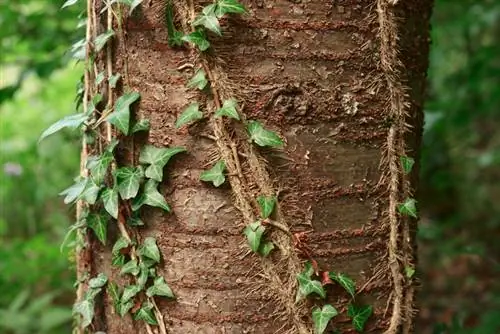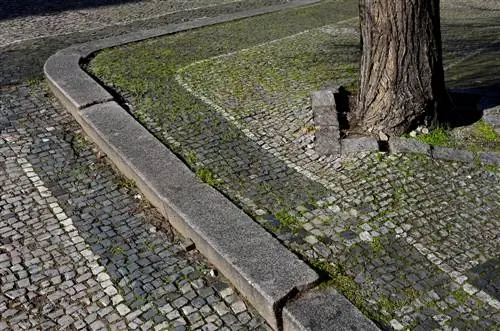- Author admin [email protected].
- Public 2023-12-16 16:46.
- Last modified 2025-01-23 11:21.
The giant sequoia tree can reach a height of an incredible 80 meters. This height suggests that the plant also penetrates deep beneath the earth's surface. Surprisingly, contrary to what was expected, the roots have a relatively flat growth. They still take up space.

How deep are the roots of a sequoia tree?
The roots of the sequoia tree are flat and wide, they penetrate a maximum of one meter into the depth and can spread horizontally up to 30 meters. Taproots rarely develop and reach a depth of up to 1.80 meters.
Growth of the roots of the sequoia tree
The sequoia tree is a heartroot. The name comes from the way the sequoia roots grow. A heart shape would be visible in cross section. With this type of root system, the roots develop in all directions. They have different strengths. The thick roots do not necessarily have to grow into the earth, but can also spread horizontally close to the earth's surface.
Spreading the roots of the sequoia tree
This is exactly the case with the Sequoia genus. Its roots reach a maximum of one meter into the ground. Their extent is all the more extensive in width. The underground root system can cover a total of 30 meters, which corresponds to an area of approximately 0.3 hectares. The substructure therefore extends far beyond the dimensions of the crown.
Different root types
With regard to the growth and strength of the roots of a sequoia tree, a distinction is made between:
- the radicle (radicula)
- Taproots
- and lateral roots
Taproots
Only in rare cases, such as a few specimens in Central Europe, does the sequoia tree form taproots that reach up to 1.80 meters deep. This type of root, which develops from the radicle, i.e. the main root, typically shows vertical growth. Additional lateral roots emerge from the taproot.
Symbiosis with mushrooms
Experience has shown that the coastal redwood forms a symbiosis with various types of fungi. This is called mycorrhiza symbioses. These fungi bind to the fine roots and are completely harmless. After all, both creatures always benefit from a symbiosis.
Shallow roots - curse or blessing?
The fact that your Sequoia suffers from an insufficient supply of nutrients due to its shallow roots should not worry you. Applying fertilizer twice a year already covers the requirement. Storms, on the other hand, are a real problem. It is not uncommon to come across uprooted tribes in American national parks. When you look at this, you first realize the size of the sequoia tree underground.






